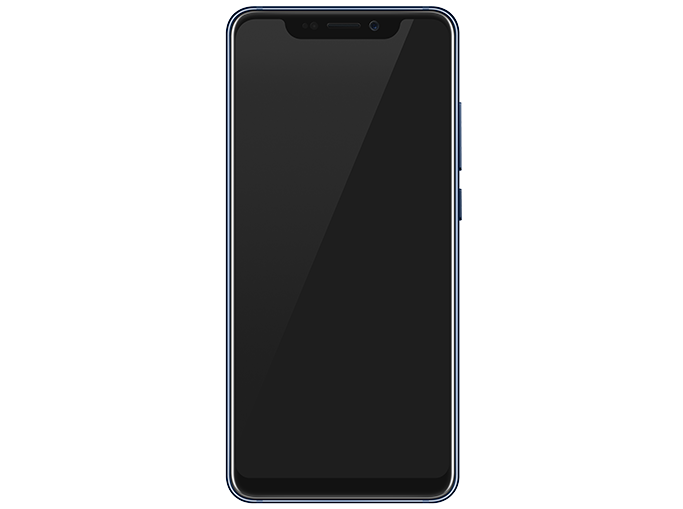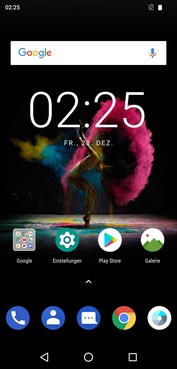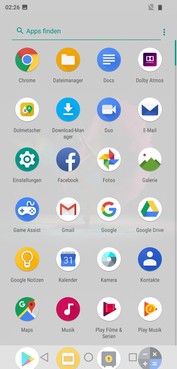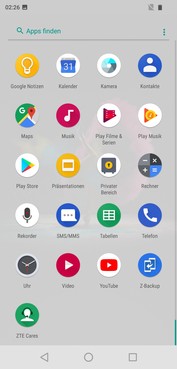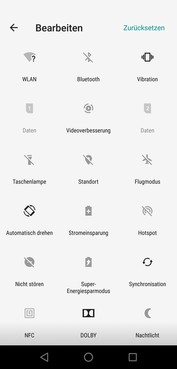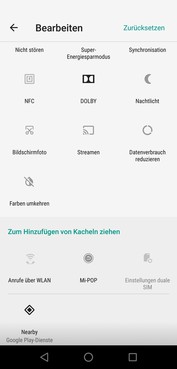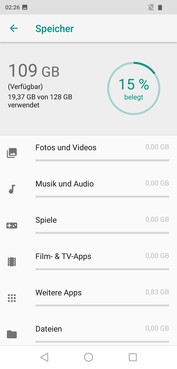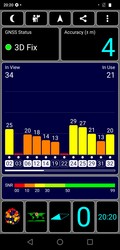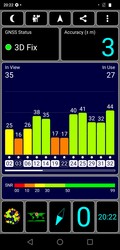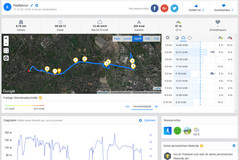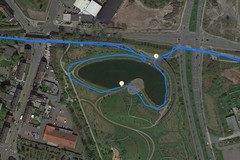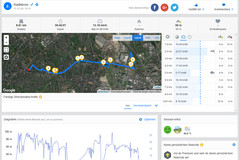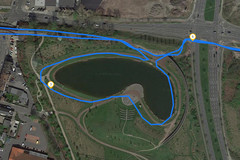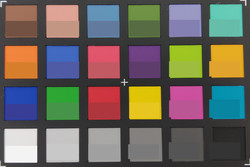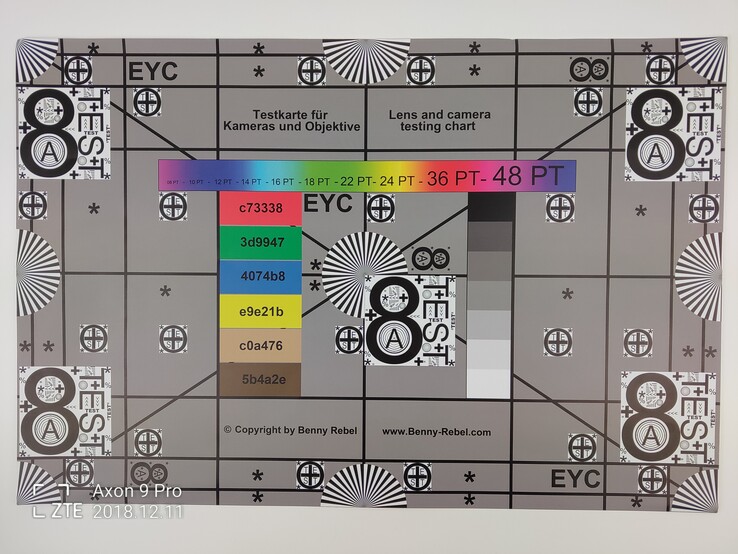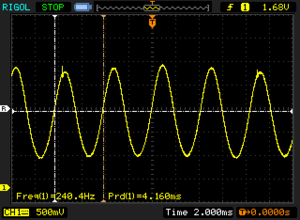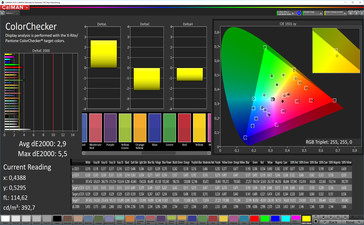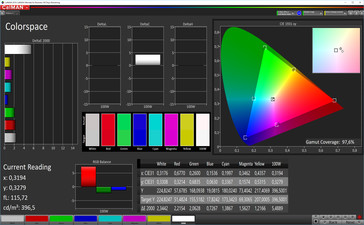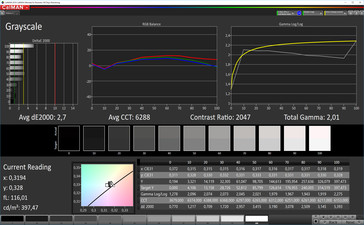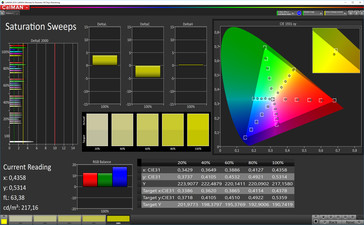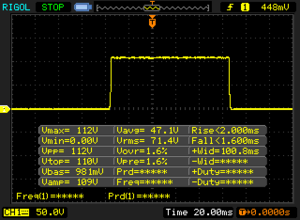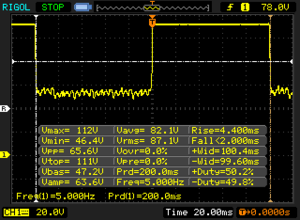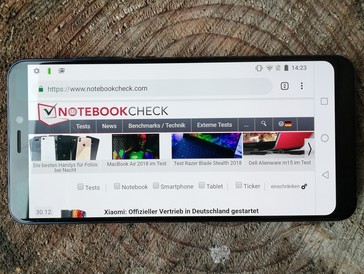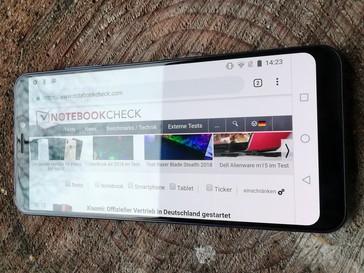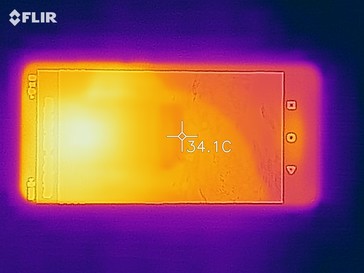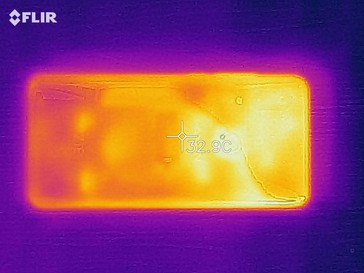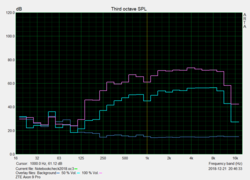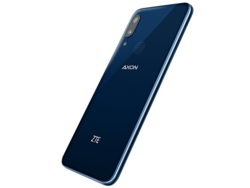ZTE Axon 9 Pro Smartphone Review
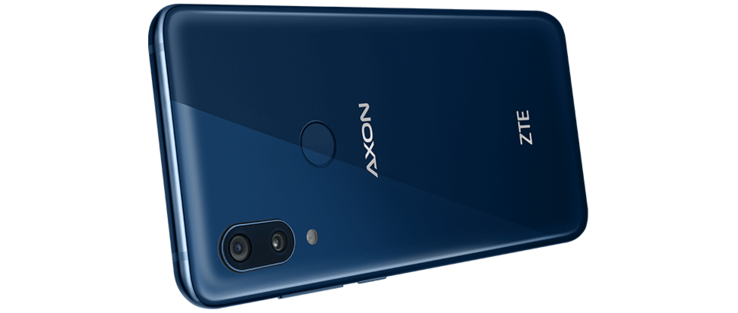
At the beginning of 2018, ZTE won some praise from our reviewers with its Axon M and Blade V9 smartphones. After the news broke in May of 2018 that ZTE would stop production of its smartphones, the future of the firm was less than certain. With the Axon 9 Pro, ZTE shows that its withdrawal from the smartphone market was only temporary and that we can expect more smartphones from the Chinese company in the future.
At first glance, the return to the smartphone market sounds promising. The 6.2-inch smartphone comes with powerful hardware such as the Qualcomm Snapdragon 845 and the Adreno 630. It also features 6 GB of RAM and 128 GB of UFS 2.1 storage. The 20+12 MP dual-camera also leaves a good impression.
With this hardware, the ZTE Axon 9 Pro is on the same level as many other similarly priced smartphones from big-name brands. One of the main competitors is the Samsung Galaxy A9 2018. Other strong competitors include: The Huawei Mate 20, the OnePlus 6T, the Xiaomi Pocophone F1 and the Asus ZenFone 5.
Case - ZTE smartphone made of glass and metal
The case of the Axon 9 Pro consists of metal and glass. The smartphone has a bezel-less design and therefore looks quite modern. The junctures where the glass meets the metal sides are very smooth, there are no chinks or any other abnormalities to be seen. Moreover, the ZTE smartphone is IP68-certified, which means that is both dust- and water-resistant.
The NanoSIM/microSD card tray is located on the left side of the device and sits tightly in its cutout. The notch at the top of the display houses the ear-speaker, front-facing camera and the ambient light sensor. The power button and the volume rocker can be found on the right side of the Axon 9 Pro. They wobble sightly but still sit quite firmly in their respective cutouts.
Connectivity - High-end Android smartphone
The ZTE Axon 9 Pro comes with the Qualcomm Snapdragon 845, which is a high-end SoC. In combination with the Adreno 630, it creates a very responsive system. Moreover, the device has 6 GB of RAM and 128 GB of UFS 2.1 flash storage. This is why the smartphone offers enough performance to run demanding applications and GPU-intensive video games. The storage capacity of the ZTE smartphone can be expanded with the help of a microSD card. However, if you decide to insert an SD card, you will have to forgo dual-SIM functionality.
Data can be transferred through a wired connection with the help of the USB Type-C port. The USB port operates at USB 2.0 speeds and features OTG functionality for connecting external devices. The fingerprint sensor on the back can be used to securely unlock the smartphone.
Software - Axon 9 Pro with Android Oreo
The ZTE Axon 9 Pro comes with a relatively stock version of Android (Oreo 8.1). The security patches were last updated on September 1st, 2018. The manufacturer has changed only a few icons and preinstalled a few apps for backup and support services. The third-party apps are limited to the Facebook app, which can be completely uninstalled without any problems. You can set up multiple user accounts for the ZTE smartphone in the settings menu.
At the time of writing this review, no system updates with more recent security patches are available for the ZTE smartphone. We also do not know whether or not our review device will be updated to Android Pie. That being said, in the past, ZTE has been pretty reliable in terms of software support. This is why we believe that the Axon 9 Pro will eventually be updated to Android Pie. Occasionally, we noticed small translation errors in the settings menu. However, these are well within reasonable bounds and do not render the system unusable in any way.
Communication and GPS - Android smartphone with fast Wi-Fi
The ZTE Axon 9 Pro supports the following mobile communication standards: GSM, UMTS and LTE. Our review device can function in almost all LTE networks. According to the manufacturer, the Android smartphone can achieve download speeds of up to 800 Mb/s and upload speeds of up to 150 Mb/s. Both SIM cards feature LTE functionality. The smartphone also supports VoLTE and Wi-Fi calling.
For short-distance communication, the Android smartphone relies on NFC, Bluetooth 5.0 and Wi-Fi with a 4x4 MIMO antenna. The Axon 9 Pro supports the IEEE-802.11 standards b, g, n and ac. In our Wi-Fi benchmarks, the Axon 9 Pro managed to achieve a very good data reception rate of 674 Mb/s and an equally good data transmission rate of 661 Mb/s. However, with these results, the ZTE smartphone is narrowly beaten by both the Xiaomi Pocophone F1 and the Huawei Mate 20.
| Networking | |
| iperf3 transmit AX12 | |
| Huawei Mate 20 | |
| ZTE Axon 9 Pro | |
| Asus ZenFone 5Z ZS620KL | |
| Xiaomi Poco F1 | |
| OnePlus 6T | |
| Samsung Galaxy A9 2018 | |
| iperf3 receive AX12 | |
| Xiaomi Poco F1 | |
| ZTE Axon 9 Pro | |
| OnePlus 6T | |
| Asus ZenFone 5Z ZS620KL | |
| Samsung Galaxy A9 2018 | |
| Huawei Mate 20 | |
We use the "GSP Test" app to examine how well the Axon 9 Pro does when it comes to geolocation. The ZTE smartphone supports the following geolocation systems: GPS, GLONASS, Beidou and Galileo. Outdoors, our review device has a margin of error of 3 meters (~10 ft). Indoors, the margin of error rises by one meter (~3 ft) to 4 meters (~13 ft).
On our compulsory bike ride, we compare the ZTE Axon 9 Pro with our reference-grade navigator Garmin Edge 500. Here, the route that we took was mapped very well by the Android smartphone. It was more accurate at certain points than our professional navigator. The ZTE smartphone is well-suited for those who need a very accurate navigation device.
Telephony and Call Quality - Good reception with the ZTE Axon 9 Pro
The smartphone comes with the standard Android phone app. It offers easy access to the dial screen and contacts. The Axon 9 Pro offers a decent call quality with a very good volume. The voices on either end of the call sound clear and most background noise is filtered out.
The box of the ZTE smartphone contains a USB Type-C headset, which does a good job when it is used for calls. You can use the included USB-C to 3.5mm headphone jack adapter to connect headphones to the smartphone.
Cameras - ZTE smartphone for snapshots
The ZTE Axon 9 Pro comes with a 12+20 MP dual camera. The first lens has an f/1.75 aperture and the second is 130° degrees wide. The ZTE smartphone uses Sony’s IMX363 image sensor, which has a pixel size of 1.4 µm. There is also a 20 MP front-facing camera. It takes good selfies under normal lighting conditions. If you zoom in you will notice that fine details and structures appear rather blurry and the image, overall, looks somewhat washed-out. In the settings menu of the camera app, you can adjust the image quality with the help of a brightness slider. Moreover, the front-facing camera supports HDR and many AI functions. These can be used to enlarge the eyes, smooth out skin wrinkles and do many other things.
During daylight, the main camera of the Axon 9 Pro takes good panoramic shots. If you zoom in far enough, you will notice some blurriness, but other than that, the image looks pretty good. Moreover, the colors also appear somewhat washed-out. The ZTE smartphone takes good close-up photos as long as the lighting is decent enough. Objects in focus are very well-detailed and sharp and the colors also appear quite punchy. The wide aperture shows its main strength in low-light conditions. You can still make out objects in shots taken in very dim environments. Of course, the edges of the objects become blurry and the fine structures become too grainy to be recognized, but the objects themselves never disappear into the darkness and the colors are still present. The camera application offers many features such as color filters, AI functions and artificial lighting effects. The image quality can be adjusted further in the settings menu. Here you can adjust the shutter speed, white balance, exposure, timer functions and focus. There are also additional camera modes such as Super Night View, Time Lapse, Slow Motion and extra long exposure times.
Videos shot with the Axon 9 Pro look just as good as the photos. The color filters and AI functions can also be used while filming. Additionally, you can get a focus lock on objects or use variable focus. Thanks to image stabilization, the videos do not look shaky. According to the settings menu, you can record videos in up to 4K. However, the FPS cannot be adjusted and there is no limit to how long the video recordings can last.
We use the “X-Rite ColorChecker Passport” tool to assess the color accuracy of the ZTE Axon 9 Pro’s camera. Here we see that most colors appear overbrightened. However, black tones look too dim.
We examine the color reproduction of the ZTE smartphone under controlled lighting conditions. Details and fine structures are well reproduced even at the edges. The colors are somewhat overbrightened and appear a little washed-out at the bottom edges.
Accessories and Warranty - Smartphone with a headset
The box contains a USB charger with an appropriate USB Type-C cable, SIM/microSD card ejection tool, a stereo headset and a plastic protective case. ZTE does not offer any other accessories.
The Axon 9 Pro has a 24-month warranty. In addition, users get a VIP service pack from ZTE free of charge. It extends the warranty by 12 months, offers the ability to replace the screen for free if it breaks within six months of purchase and covers the damages caused by liquid ingress over the entire warranty period. Please see our Guarantees, Return policies and Warranties article for country-specific information.
Input Devices and Handling - ZTE smartphone with a responsive touchscreen
The Axon 9 Pro comes with Google’s standard keyboard known as GBoard, which is why typing on the smartphone is easy, even over prolonged periods of time. The display responds to inputs reliably and without any delays. The slightly rough surface of the touchscreen makes drag-and-drop motions somewhat difficult. This tires your fingers after a while.
There is a fingerprint scanner on the back of the ZTE smartphone. It unlocks the smartphone quickly and reliably. During our review, it did not fail to recognize our fingerprint even once.
Display - Android smartphone with an AMOLED screen
The AMOLED display of the Axon 9 Pro measures 6.21 inches diagonally and has a native resolution of 2248x1080. The average brightness of 517 cd/m² is quite average when compared to other competing devices. However, the brightness distribution of 96% is very good. In our APL50 test, the brightness peaks at 686 cd/m². The maximum brightness with the ambient light sensor disabled amounts to only 397 cd/m².
During our measurements, we determined that the smartphone uses pulse width modulation for brightness control. This is commonplace among AMOLED displays. However, as a result of this, the display flickers with a frequency of 240 Hz at 99% brightness and below.
| |||||||||||||||||||||||||
Brightness Distribution: 96 %
Center on Battery: 521 cd/m²
Contrast: ∞:1 (Black: 0 cd/m²)
ΔE ColorChecker Calman: 2.9 | ∀{0.5-29.43 Ø4.77}
ΔE Greyscale Calman: 2.7 | ∀{0.09-98 Ø5}
Gamma: 2.01
CCT: 6288 K
| ZTE Axon 9 Pro AMOLED, 2248x1080, 6.2" | Samsung Galaxy A9 2018 OLED, 2220x1080, 6.3" | OnePlus 6T Optic AMOLED, 2340x1080, 6.4" | Asus ZenFone 5Z ZS620KL 2246x1080, 6.2" | Xiaomi Poco F1 IPS, 2246x1080, 6.2" | Huawei Mate 20 TFT-LCD (IPS), 2244x1080, 6.5" | |
|---|---|---|---|---|---|---|
| Screen | 14% | 6% | -12% | -23% | 18% | |
| Brightness middle (cd/m²) | 521 | 553 6% | 437 -16% | 601 15% | 489 -6% | 782 50% |
| Brightness (cd/m²) | 517 | 553 7% | 442 -15% | 565 9% | 486 -6% | 784 52% |
| Brightness Distribution (%) | 96 | 96 0% | 95 -1% | 90 -6% | 93 -3% | 94 -2% |
| Black Level * (cd/m²) | 0.6 | 0.34 | 0.36 | |||
| Colorchecker dE 2000 * | 2.9 | 2.2 24% | 2.21 24% | 3.4 -17% | 3.8 -31% | 2.3 21% |
| Colorchecker dE 2000 max. * | 5.5 | 5.1 7% | 4.27 22% | 6.1 -11% | 7.1 -29% | 7 -27% |
| Greyscale dE 2000 * | 2.7 | 1.7 37% | 2.1 22% | 4.4 -63% | 4.4 -63% | 2.4 11% |
| Gamma | 2.01 109% | 2.06 107% | 2.307 95% | 2.25 98% | 2.22 99% | 2.22 99% |
| CCT | 6288 103% | 6434 101% | 6353 102% | 7493 87% | 7213 90% | 6839 95% |
| Contrast (:1) | 1002 | 1438 | 2172 |
* ... smaller is better
Screen Flickering / PWM (Pulse-Width Modulation)
| Screen flickering / PWM detected | 240.4 Hz | ≤ 99 % brightness setting | |
The display backlight flickers at 240.4 Hz (worst case, e.g., utilizing PWM) Flickering detected at a brightness setting of 99 % and below. There should be no flickering or PWM above this brightness setting. The frequency of 240.4 Hz is relatively low, so sensitive users will likely notice flickering and experience eyestrain at the stated brightness setting and below. In comparison: 53 % of all tested devices do not use PWM to dim the display. If PWM was detected, an average of 8083 (minimum: 5 - maximum: 343500) Hz was measured. | |||
Like many other smartphones with an AMOLED display, the Axon 9 Pro offers a very good contrast ratio, which is outside the range of our measuring devices. The black value is also exceptionally good, because pixels can be completely turned off to display a pure black.
The CalMAN analysis reveals that the colors appear very balanced, straight out of the box. Moreover, an optional mode allows for a smoother and sharper representation of moving images.
Display Response Times
| ↔ Response Time Black to White | ||
|---|---|---|
| 3.6 ms ... rise ↗ and fall ↘ combined | ↗ 2 ms rise | |
| ↘ 1.6 ms fall | ||
| The screen shows very fast response rates in our tests and should be very well suited for fast-paced gaming. In comparison, all tested devices range from 0.1 (minimum) to 240 (maximum) ms. » 14 % of all devices are better. This means that the measured response time is better than the average of all tested devices (20.2 ms). | ||
| ↔ Response Time 50% Grey to 80% Grey | ||
| 6.4 ms ... rise ↗ and fall ↘ combined | ↗ 4.4 ms rise | |
| ↘ 2 ms fall | ||
| The screen shows very fast response rates in our tests and should be very well suited for fast-paced gaming. In comparison, all tested devices range from 0.165 (minimum) to 636 (maximum) ms. » 18 % of all devices are better. This means that the measured response time is better than the average of all tested devices (31.6 ms). | ||
The AMOLED panel of the ZTE Axon 9 Pro offers very wide viewing angles. The screen content can be read from any angle without any distortions. However, a greenish tint appears at very acute angles. In everyday use, such angles would be more than impractical.
As long as there are no strong reflections on the screen, the ZTE smartphone can be used from unusual positions.
Performance - The Axon 9 Pro is powerful
The Axon 9 Pro comes with the Qualcomm Snapdragon 845 and the Adreno 630 graphics unit. Moreover, our review device features 6 GB of RAM and 128 GB of UFS 2.1 storage. This is why the smartphone is powerful enough for the smooth operation of Android and can run all demanding applications and even graphically intense games.
Our benchmark results reveal that the ZTE smartphone has very good system performance, both in terms of the CPU and the GPU. Nevertheless, the Axon 9 Pro only manages to take a spot in the middle of our comparison chart.
| AnTuTu v6 - Total Score (sort by value) | |
| ZTE Axon 9 Pro | |
| Samsung Galaxy A9 2018 | |
| OnePlus 6T | |
| Xiaomi Poco F1 | |
| Huawei Mate 20 | |
| Average Qualcomm Snapdragon 845 (162183 - 242953, n=23) | |
In the browser benchmarks, the Axon 9 Pro delivers slightly subpar results. However, this does not translate to real life performance. The scrolling is smooth and both websites and media content load quickly. When compared to other smartphones in this price range, the browser performance is on a normal level.
| JetStream 1.1 - Total Score | |
| Huawei Mate 20 (Chrome 70.0.3538.80) | |
| Asus ZenFone 5Z ZS620KL (Chrome 68; AI Boost ON) | |
| Asus ZenFone 5Z ZS620KL (Chrome 68) | |
| OnePlus 6T (Chrome 70) | |
| Average Qualcomm Snapdragon 845 (22.5 - 90.9, n=25) | |
| Xiaomi Poco F1 (Chrome 68) | |
| ZTE Axon 9 Pro (Chrome 71) | |
| Samsung Galaxy A9 2018 (Chrome 70) | |
| Octane V2 - Total Score | |
| Average of class Smartphone (2228 - 126661, n=195, last 2 years) | |
| Huawei Mate 20 (Chrome 70.0.3538.80) | |
| OnePlus 6T (Chrome 70) | |
| Asus ZenFone 5Z ZS620KL (Chrome 68, AI Boost ON) | |
| Asus ZenFone 5Z ZS620KL (Chrome 68) | |
| ZTE Axon 9 Pro (Chrome 71) | |
| Average Qualcomm Snapdragon 845 (3991 - 18275, n=28) | |
| Xiaomi Poco F1 (Chrome 68) | |
| Samsung Galaxy A9 2018 (Chrome 70) | |
| Mozilla Kraken 1.1 - Total | |
| Samsung Galaxy A9 2018 (Chrome 70) | |
| Average Qualcomm Snapdragon 845 (2154 - 11204, n=28) | |
| Xiaomi Poco F1 (Chrome 68) | |
| ZTE Axon 9 Pro (Chrome 71) | |
| OnePlus 6T (Chrome 70) | |
| Asus ZenFone 5Z ZS620KL (Chrome 68, AI Boost ON) | |
| Asus ZenFone 5Z ZS620KL (Chrome 68) | |
| Huawei Mate 20 (Chrome 70.0.3538.80) | |
| Average of class Smartphone (257 - 28190, n=155, last 2 years) | |
* ... smaller is better
The memory performance of the ZTE Axon 9 Pro is also quite mediocre, when compared to other competing devices. It has 128 GB of internal UFS 2.1 flash storage, but only 110 GB of storage space is available for installing apps and storing user data.
The storage capacity of the Axon 9 Pro can be expanded with the help of a microSD card. With our reference-grade SD card Toshiba Exceria Pro M501, the ZTE smartphone only manages to achieve mediocre read and write speeds when compared to other devices in our comparison chart. Moreover, you cannot insert a second SIM card, if you decide to use an SD card. Additionally, you cannot use the SD card to store apps and it cannot be formatted as internal storage.
| ZTE Axon 9 Pro | Samsung Galaxy A9 2018 | OnePlus 6T | Asus ZenFone 5Z ZS620KL | Xiaomi Poco F1 | Huawei Mate 20 | Average 128 GB UFS 2.1 Flash | Average of class Smartphone | |
|---|---|---|---|---|---|---|---|---|
| AndroBench 3-5 | -15% | 1% | 54% | -11% | 108% | 89% | 656% | |
| Sequential Read 256KB (MB/s) | 719 | 426.6 -41% | 735 2% | 721 0% | 705 -2% | 840 17% | 761 ? 6% | 2248 ? 213% |
| Sequential Write 256KB (MB/s) | 196.4 | 194.6 -1% | 204.4 4% | 193.2 -2% | 155.6 -21% | 196.7 0% | 296 ? 51% | 1887 ? 861% |
| Random Read 4KB (MB/s) | 141.3 | 116.8 -17% | 138.5 -2% | 124.1 -12% | 101 -29% | 157.9 12% | 154 ? 9% | 299 ? 112% |
| Random Write 4KB (MB/s) | 22.52 | 19.79 -12% | 22 -2% | 96.6 329% | 17.81 -21% | 158.1 602% | 130.4 ? 479% | 346 ? 1436% |
| Sequential Read 256KB SDCard (MB/s) | 85.4 ? | 73.7 ? -14% | 85.9 ? 1% | 85.3 ? 0% | 83.2 ? -3% | 76 ? -11% | ||
| Sequential Write 256KB SDCard (MB/s) | 61.6 ? | 59.7 ? -3% | 66.5 ? 8% | 65.6 ? 6% | 72.3 ? 17% | 59.6 ? -3% |
Games - Gaming-capable Android smartphone
The ZTE Axon 9 Pro comes with the Qualcomm Adreno 630 graphics unit. This GPU can run graphically demanding apps and is quite energy-efficient, considering the level of performance that it offers.
The games we benchmarked such as "Arena of Valor" and "Asphalt 9: Legends" ran smoothly on high settings over a prolonged period of time. Both the touchscreen and the motion sensor work reliably and without any delays. Your fingers may get tired during long gaming sessions because the surface of the touchscreen is not perfectly smooth and puts up a little resistance.
Emissions - Smartphone with Dolby Atmos
Temperature
The surface temperatures of the ZTE Axon 9 Pro reach up to 24 °C (75.2 °F) when idle and a maximum of 34 °C (93.2 °F) under load. This is why the smartphone can be comfortably held in the hand over an extended period of time. During our review, we did not observe any limitations that might be attributed to overheating internal components.
(+) The maximum temperature on the upper side is 33.6 °C / 92 F, compared to the average of 35.2 °C / 95 F, ranging from 21.9 to 247 °C for the class Smartphone.
(+) The bottom heats up to a maximum of 32.5 °C / 91 F, compared to the average of 34 °C / 93 F
(+) In idle usage, the average temperature for the upper side is 23.8 °C / 75 F, compared to the device average of 32.9 °C / 91 F.
Speakers
The speaker of the ZTE Axon 9 Pro sounds comparatively loud and quite balanced. The Android smartphone supports Dolby Atmos and simulates a stereo effect with the help of the ear-speaker. This functions very well, which is why the smartphone is well-suited for the consumption of media content.
However, if you intend to use the smartphone for media consumption on a regular basis, then we recommend using external speakers or headphones. The included headset is not a real alternative, because it is designed for making phone calls, not consuming media content.
ZTE Axon 9 Pro audio analysis
(+) | speakers can play relatively loud (82.1 dB)
Bass 100 - 315 Hz
(-) | nearly no bass - on average 22.3% lower than median
(±) | linearity of bass is average (12.8% delta to prev. frequency)
Mids 400 - 2000 Hz
(+) | balanced mids - only 3.5% away from median
(+) | mids are linear (6.4% delta to prev. frequency)
Highs 2 - 16 kHz
(±) | higher highs - on average 5.7% higher than median
(+) | highs are linear (1.9% delta to prev. frequency)
Overall 100 - 16.000 Hz
(±) | linearity of overall sound is average (20.6% difference to median)
Compared to same class
» 36% of all tested devices in this class were better, 9% similar, 55% worse
» The best had a delta of 11%, average was 35%, worst was 134%
Compared to all devices tested
» 54% of all tested devices were better, 8% similar, 38% worse
» The best had a delta of 4%, average was 24%, worst was 134%
Huawei Mate 20 audio analysis
(±) | speaker loudness is average but good (78.4 dB)
Bass 100 - 315 Hz
(-) | nearly no bass - on average 18.1% lower than median
(±) | linearity of bass is average (12.5% delta to prev. frequency)
Mids 400 - 2000 Hz
(+) | balanced mids - only 4.5% away from median
(+) | mids are linear (4.8% delta to prev. frequency)
Highs 2 - 16 kHz
(±) | higher highs - on average 7.5% higher than median
(+) | highs are linear (6.2% delta to prev. frequency)
Overall 100 - 16.000 Hz
(±) | linearity of overall sound is average (23.2% difference to median)
Compared to same class
» 52% of all tested devices in this class were better, 7% similar, 41% worse
» The best had a delta of 11%, average was 35%, worst was 134%
Compared to all devices tested
» 69% of all tested devices were better, 5% similar, 26% worse
» The best had a delta of 4%, average was 24%, worst was 134%
Battery Life - The Axon 9 Pro lasts for ten hours
Energy Consumption
According to our measurements, the Axon 9 Plus has a relatively low power draw of at least 0.86 watts when idle and a maximum power consumption of up to 10.82 watts under load. In terms of average power consumption, it is the most energy-efficient smartphone in our comparison chart.
The included 18-watt charger is powerful enough to be able to charge the ZTE smartphone under any circumstances.
| Off / Standby | |
| Idle | |
| Load |
|
Key:
min: | |
| ZTE Axon 9 Pro 4000 mAh | Samsung Galaxy A9 2018 3800 mAh | OnePlus 6T 3700 mAh | Asus ZenFone 5Z ZS620KL 3300 mAh | Xiaomi Poco F1 4000 mAh | Huawei Mate 20 4000 mAh | Average Qualcomm Snapdragon 845 | Average of class Smartphone | |
|---|---|---|---|---|---|---|---|---|
| Power Consumption | -21% | -3% | -64% | -18% | -35% | -22% | -21% | |
| Idle Minimum * (Watt) | 0.86 | 1.06 -23% | 0.7 19% | 0.97 -13% | 0.65 24% | 0.69 20% | 0.862 ? -0% | 0.847 ? 2% |
| Idle Average * (Watt) | 1.1 | 1.94 -76% | 1.1 -0% | 2.52 -129% | 1.97 -79% | 2.28 -107% | 1.728 ? -57% | 1.446 ? -31% |
| Idle Maximum * (Watt) | 1.21 | 1.98 -64% | 2.1 -74% | 2.62 -117% | 2.01 -66% | 2.52 -108% | 2.07 ? -71% | 1.63 ? -35% |
| Load Average * (Watt) | 5.02 | 3.56 29% | 4.2 16% | 7.41 -48% | 4.29 15% | 5.21 -4% | 4.87 ? 3% | 6.95 ? -38% |
| Load Maximum * (Watt) | 10.82 | 7.49 31% | 8.3 23% | 12.22 -13% | 9.05 16% | 8.49 22% | 9.27 ? 14% | 11.3 ? -4% |
* ... smaller is better
Battery Life
In our practically oriented Wi-Fi test, the ZTE Axon 9 Pro lasts for exactly 11 hours. Nevertheless, the battery life is quite average, because many other smartphones in this price range manage to achieve similar battery runtimes, but with weaker batteries.
The battery of the ZTE Axon 9 Pro takes less than two hours to fully charge with the included fast charger.
| ZTE Axon 9 Pro 4000 mAh | Samsung Galaxy A9 2018 3800 mAh | OnePlus 6T 3700 mAh | Asus ZenFone 5Z ZS620KL 3300 mAh | Xiaomi Poco F1 4000 mAh | Huawei Mate 20 4000 mAh | |
|---|---|---|---|---|---|---|
| Battery runtime | ||||||
| WiFi v1.3 (h) | 11 | 11.5 5% | 14.4 31% | 10.8 -2% | 13.5 23% | 14.8 35% |
Pros
Cons
Verdict - A solid comeback
With the Axon 9 Pro, ZTE delivers a smartphone that can give the competition a run for its money. The Android smartphone offers a good performance and is capable of running many highly demanding applications. With NFC, Bluetooth 5.0 and Wireless AC, the smartphone brings a superb mix of connectivity options. Plus, the AMOLED display leaves a good impression. The camera is on the same level as the rest of the competition and does especially well in low-light conditions.
The ZTE Axon 9 Pro is just as good as the rest of the competition. However, it fails to provide any truly distinguishing features.
On closer inspection, the Axon 9 Pro draws some criticism. The battery life is too short for a 4000-mAh battery and some users would also really like to see a 3.5-mm headphone jack. Buyers of the ZTE smartphone get a solid device, which does not have any real advantages over its competitors. At the end of the day, the decision to buy will come down to personal preferences.
ZTE Axon 9 Pro
- 01/03/2019 v6 (old)
Mike Wobker


